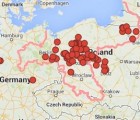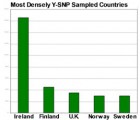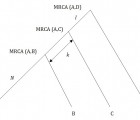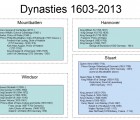
A comparison was made of 37 STR markers on the Y-chromosome of eight individuals bearing the surname Briese. Based on paper records, two of these individuals were known to be related, but relationships could not be determined for others. The genetic study showed three distinct genetic lineages bearing the Briese surname. Five of the eight were shown to have had a common ancestor within genealogical time, which suggests that a cluster of related Briese families lived in the Deutsch Krone area of West Prussia in the 18th century. A sixth individual, originating from a different geographic region, Meseritz in Posen, was more distantly related, while the remaining two individuals were not related at all, either to the group or to each other. While not providing proof, these findings agree with the hypothesis that the Briese surname originated as a place name that was initially adopted by unrelated people. This would result in distinct clusters of more-closely related families, genetically distinct from other such clusters. Genetic genealogy can help to determine relationships between emigrant Briese families and those remaining in Germany. More individuals from Briese families with known origins are needed to participate in this study to confirm and enlarge on these preliminary findings.





